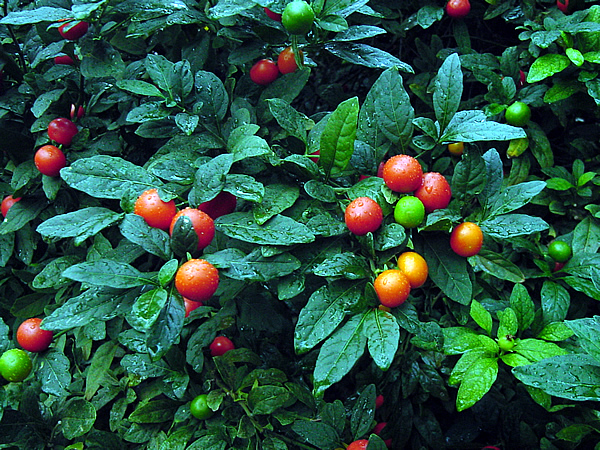Poison Berries You Really Want to Avoid in the Wilderness

Berries are a powerful source of nutrients, and they taste exceptionally-delicious. However, eating the wrong ones, especially in the field, can lead to disastrous consequences. Take a look at some of the more important ones to avoid in order to avoid having an additional survival crisis to contend with.
Mistletoe

While this plant is a great excuse to give someone special a kiss around Christmas time, ingesting mistletoe in the wild can lead to severe consequences. All parts of the plant are toxic, but higher concentrations of the poison are found in the stem and leaves. However, eating a handful of mistletoe berries can be harmful to your health as well. Symptoms can be as minor as stomach or abdominal cramping and diarrhea to blurred vision, convulsions and death in some cases.
Holly Berry

Holly berries grow in clusters next to waxy, pointy leaves. They are also familiar to many of us because they are popular decorations during the holidays. However, in the wild, ingesting more than a few can have fatal consequences. The main risk associated with ingesting holly berries is dehydration, vomiting and diarrhea. Drowsiness, confusion and lethargy are also common with an overdose of these deceptively-innocent looking berries.
Ivy Berries

Ivy berries are found on a number of ivy plants that grow in many areas in North America. They are also very innocent looking. They range in colors, but the most common are green, yellow, dark blue and red. They can easily be confused with blueberries due to their round shape and juicy appearance. The good news is that these berries are extremely bitter, so chances are that anyone eating them will spit them out before the toxins get absorbed into their system.
However, ingestion can produce a host of symptoms that range from annoying to fatal. These include the development of a rash, blisters, digestive cramping, diarrhea, drooling, increased thirst, rapid heart rate, dilated pupils, alterations to levels of consciousness, coma, fever and death. This is not an exhaustive list of symptoms, and they will vary from person to person and plant to plant.
Jerusalem Cherries

These berries resemble small oranges or tomatoes, and their round shape along with bright colors make them a tempting treat for pets as well as children. Symptoms of poisoning include vomiting, diarrhea, enlarged pupils, stomach pain, drowsiness, severe headache, dangerously low blood pressure and slow heart rate. Labored and depressed breathing is also common. Try to avoid inducing vomiting or giving someone fluids or foods after eating this plant and seek immediate medical attention. The good news is that symptoms are usually proportional to the amount that has been ingested, so small amounts may produce no ill-effects whatsoever.
Rosary Pea

This plant is commonly found in tropical areas, including Florida, and the toxins within the berries can be more than 100 times as dangerous as ricin. The berries look like small tomatoes that are bright red with a black-purple base. The toxin, abrin, works by entering into cells and disrupting their biological processes. The toxin can subsequently travel throughout the body and lead to death. This is considered by many to be one of the most toxic plants in the world.
The good news is that absorption of abrin through the rosary pea is slow, and this provides patients with ample time to seek and obtain medical treatment. Symptoms of poisoning include nausea and vomiting, often with blood, hallucinations, weakness, chest pains, skin redness, pulmonary edema, fever and persistent coughing. High does that go left untreated can lead to organ failure and death within a week of exposure.
These are just a few examples of why it is so important to learn how to identify berries in the wild. While most are safe to eat, knowing which ones to avoid can prevent serious illness as well as death. Make sure to know what you are eating before putting anything in your mouth in the wilderness, and make sure to keep an eye on your children as they explore their surroundings and satisfy their curiosity. The last thing you need is a major medical emergency on top of everything else that you will face during a crisis or survival situation.
